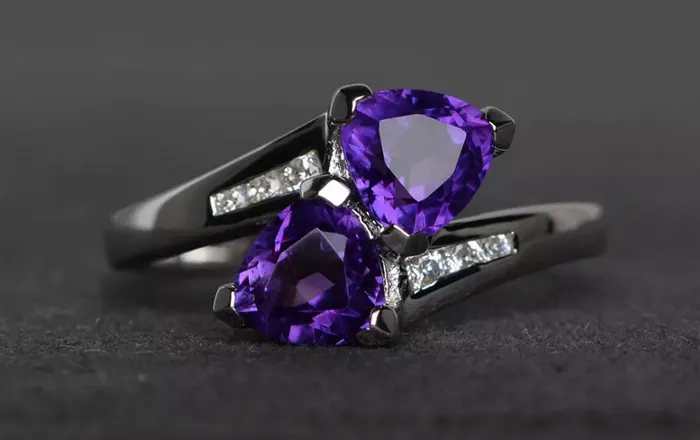Diamonds have long captivated humanity with their brilliance, rarity, and perceived symbolism of wealth and luck. From ancient civilizations to modern-day societies, diamonds have adorned the fingers, necks, and ears of countless individuals, often representing love, status, and even spiritual significance. But beyond their aesthetic appeal and material value, a persistent question lingers: is wearing a diamond truly lucky?
Unveiling the Mystique of Diamonds
Diamonds, formed deep within the Earth’s mantle under extreme pressure and temperature, are among the hardest natural substances known to humanity. Their rarity and the laborious process of extraction have historically made them a symbol of wealth and power. In many cultures, diamonds are believed to possess mystical properties, ranging from enhancing love and clarity of thought to warding off evil and promoting prosperity.
Cultural Perspectives on Diamond Luck
Throughout history, various cultures have attributed different meanings and powers to diamonds:
Ancient Civilizations: In ancient India, diamonds were seen as symbols of clarity, purity, and invincibility. They were often associated with the divine and believed to bring strength and protection to their wearers. Similarly, ancient Greeks believed that diamonds were splinters of stars fallen to Earth, imbued with celestial powers.
Medieval Europe: During the Middle Ages, diamonds were considered stones of courage and invincibility. Knights wore diamonds into battle, believing they would protect them and bring them victory. Diamonds were also associated with purity and faithfulness in love.
Eastern Cultures: In many Eastern cultures, including China and Japan, diamonds have been revered for their ability to enhance spiritual well-being and attract good fortune. They were often incorporated into religious artifacts and worn as protective talismans.
Modern Symbolism: Today, diamonds continue to hold significant cultural value. They are often exchanged as symbols of love and commitment, and their presence in jewelry is seen as a marker of success and prosperity.
The Psychological Impact of Diamonds
Beyond cultural and historical perspectives, the allure of diamonds extends into psychology:
Symbolism and Emotional Significance
Love and Romance: Diamonds are closely associated with love and romance in modern society. Engagement rings, typically featuring diamonds, symbolize commitment and eternal love. The act of wearing a diamond ring can evoke feelings of happiness, security, and emotional fulfillment.
Status and Achievement: Owning and wearing diamonds can also be a status symbol. For many, it represents achievement and success, contributing to feelings of self-worth and social recognition.
Psychological Effects of Wearing Diamonds
Confidence Boost: Wearing diamonds can boost self-confidence and enhance one’s sense of personal worth. This psychological effect is often tied to the perceived value and beauty of the diamond.
Sense of Security: Some individuals feel a sense of security or protection when wearing diamonds, attributing a symbolic shield against negative energies or events.
Scientific Perspectives on Diamond Luck
While cultural and psychological perspectives provide valuable insights into the perceived luck associated with diamonds, scientific inquiry approaches the question from a different angle:
Geological Rarity and Value
Natural Rarity: Diamonds are formed under unique geological conditions, making them rare and valuable. Their scarcity contributes to their perceived worth and the belief that possessing one brings good fortune.
Economic Value: The economic impact of diamonds cannot be understated. The diamond industry contributes significantly to global economies and shapes social and political landscapes in diamond-rich regions.
See Also: Do You Sleep with a Diamond Ring On?
Diamonds as Symbols of Stability
Investment and Stability: Diamonds are often viewed as stable investments. Their enduring value and liquidity make them attractive assets in uncertain economic times, reinforcing the perception of diamonds as symbols of stability and financial luck.
Debunking Myths and Exploring Realities
Despite their enduring allure and perceived symbolism, the question of whether wearing a diamond is inherently lucky remains subjective and multifaceted:
Cultural Relativism
Varied Beliefs: Cultural beliefs surrounding diamonds vary widely. What one culture considers lucky or auspicious may differ from another’s interpretation. Understanding these cultural nuances is crucial in exploring the broader significance of diamonds.
Individual Beliefs and Experiences
Personal Meaning: The significance of diamonds ultimately lies in personal beliefs and experiences. For some, wearing a diamond may indeed bring a sense of luck or positive energy. For others, its value may be purely aesthetic or sentimental.
Ethical Considerations
Ethical Sourcing: The diamond industry faces scrutiny over ethical concerns, including labor practices and environmental impact. Conscious consumers may choose ethically sourced diamonds or alternative gemstones, influencing their perceptions of luck associated with jewelry.
Conclusion
In conclusion, the question of whether wearing a diamond is lucky intertwines cultural, psychological, and scientific perspectives. Diamonds have transcended time and culture, captivating humanity with their beauty and mystique. Whether viewed through the lens of love and romance, psychological symbolism, economic value, or cultural heritage, diamonds continue to hold a special place in the human experience.
As individuals navigate the complexities of belief and perception surrounding diamonds, one thing remains clear: the allure of diamonds extends far beyond their material value. Whether worn as symbols of love and commitment, markers of status and success, or talismans of protection and luck, diamonds continue to spark fascination and inspire wonder in those who wear them.
Ultimately, the question of whether wearing a diamond is lucky may not have a definitive answer. Instead, it invites us to explore the rich tapestry of human beliefs and experiences, where the true value of a diamond lies in the meaning we attribute to it.
In a world where symbolism and reality intertwine, diamonds stand as enduring testaments to the complexities of human culture and the timeless allure of beauty, luck, and love.

